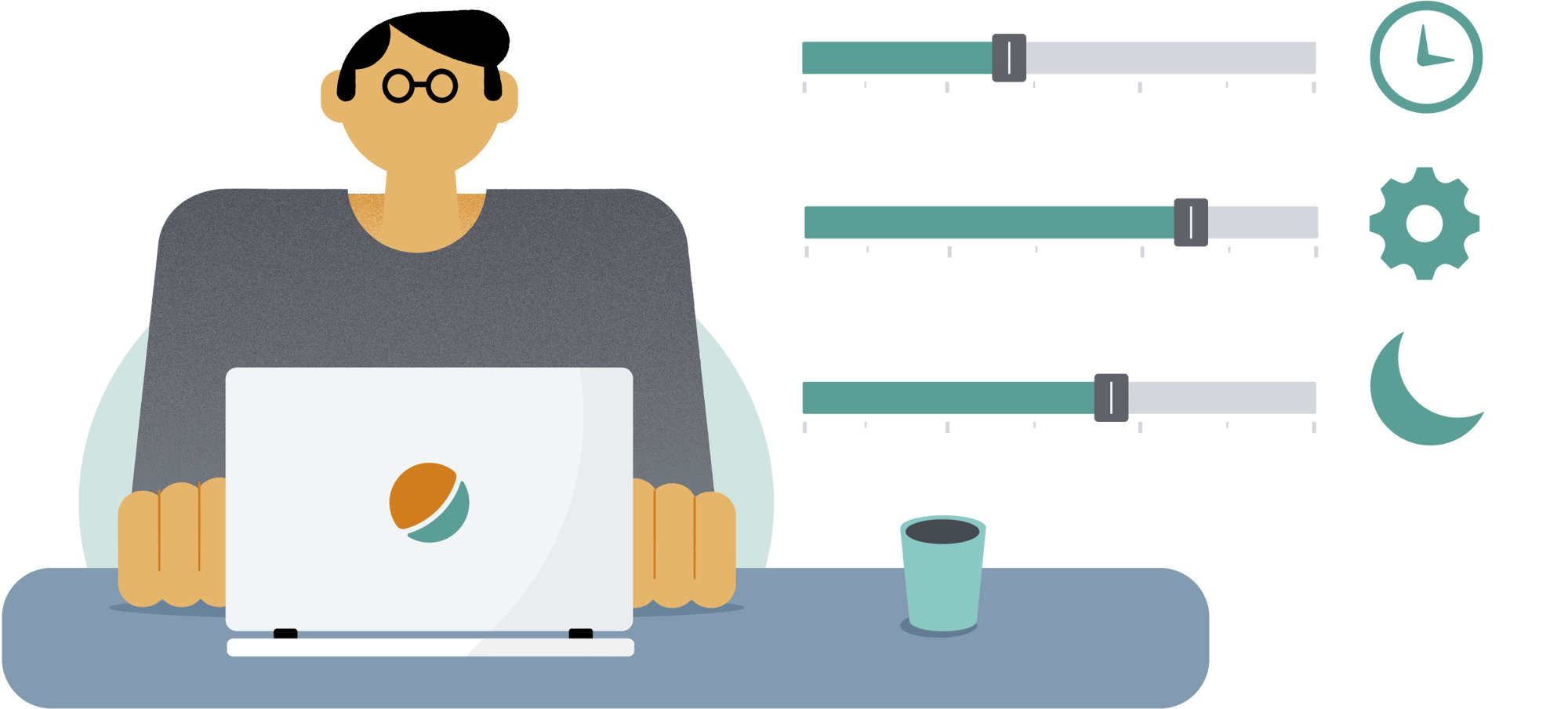- the Mental Health Toolkit
- Recovery Calculator
Recovery Calculator
The calculator designed for work units helps you evaluate the operational models that support recovery.

What?
Assess the practices of your work unit with regard to recovery based on the calculator’s questions. The Recovery Calculator is suitable for assessing the current situation and planning the development work of units and teams with similar work practices. The Recovery Calculator is best suited for office and expert work. It can be used as part of the annual risk assessment and occupational health co-operation.
For whom?
Supervisors in co-operation with the personnel. The Recovery Calculator also provides important information for management, HR, occupational safety and health, personnel representatives and occupational health care.
Benefits?
The calculator helps to understand the work unit’s challenges related to recovery and ensure that the unit’s practices promote recovery and coping at work.
Work is increasingly self-managed and takes place remotely or outside the employer's premises. Work can also be done at any time of the day. How to recover on a daily basis at work and between working days? Are working days and breaks timed correctly both at the employer's premises and in remote work? These are key factors in fostering coping at work.
The Recovery Calculator can be used to evaluate working conditions from the perspective of recovery. The Recovery Calculator helps to understand challenges related to recovery and to ensure that workplace practices promote recovery at work.
The Recovery Calculator guides you in identifying and solving challenges that are critical for recovery. It also proposes method cards, which the organization can use to identify and implement operational models that promote recovery.
-
Instructions
-
- The assessment requires the participation of a work unit supervisor and personnel representatives (preferably more than one). It is a good idea to agree on the development activities together with the entire unit.
- The Recovery Calculator is suitable for assessing the current situation and planning the development work of units with similar work practices. The results can also be used by senior supervisors, occupational health care and HR management. They should be contacted about initiating and implementing the development activities.
- The Recovery Calculator can be used as part of the annual risk assessment and occupational health co-operation. It can be taken again after any development activities have been implemented in order to assess their effectiveness.
-
-
Summary of the questions of the Recovery Calculator
-
Information required to answer the questions can be found in the following systems, among others:
- guidelines and decisions by the management and HR
- HR systems
- hours tracking
- previous surveys.
The questions
Can employees in general control both their working and leisure time?
Has the organization agreed that work is done only during working hours and/or defined the conditions under which employees must be available during their free time?
Are there people in your organization who work 50 hours or more per week?
Do instructions regarding performance appraisals include annually discussions of issues related to workload and coping?
If there is a lot of traveling in your organization, are there defined arrangements related to recovery and leisure time after travel days?
Does the management of the organization set an example of aiming to work only during working hours?
Is remote work or a combination of remote and in-office work (hybrid work) a common practice at your workplace?
Have the physical, psychosocial and cognitive stress factors of work been assessed and identified at your workplace?
Has the physical stress caused by work been minimized with measures such as safe working practices, solutions related to workspaces and the work environment or by utilizing work equipment and assistive devices?
Has the psychosocial workload been minimized by measures such as increasing the ability to influence work, clearly defining objectives and responsibilities, ensuring reasonable workloads, and developing interaction co-operation in the work community?
Do you develop and maintain a sufficient number of good practices to foster a sense of community?
Has the cognitive burden of work been minimized by measures such as work organization, realistic workload estimates, and ensuring peaceful conditions for work that requires concentration by minimizing interruptions and distractions?
Do you have any meeting practices in place that promote recovery related to factors such as the number, length and timing of meetings?
Is it possible, both at the workplace and when working remotely, to have a daily lunch break, coffee break and microbreaks (a break of less than five minutes) according to need to create “porosity” in the working day?
Do you have any policies that encourage exercise in commuting and at the workplace?
Is there shift work done in your organization? Do you have people in our organization who have more than once less than 11 hours between the work shifts weekly, have less than 28 hours off after night shifts, have only one day off between night shifts, may have a weekly rest period of less than 35 hours or have individual days off weekly?
-
Experts
Research Professor Mikko Härmä, Chief Researcher Virpi Ruohomäki and Research Manager Mikael Sallinen, Finnish Institute of Occupational Health
See also
Supporting mental health at work - material for supervisors

